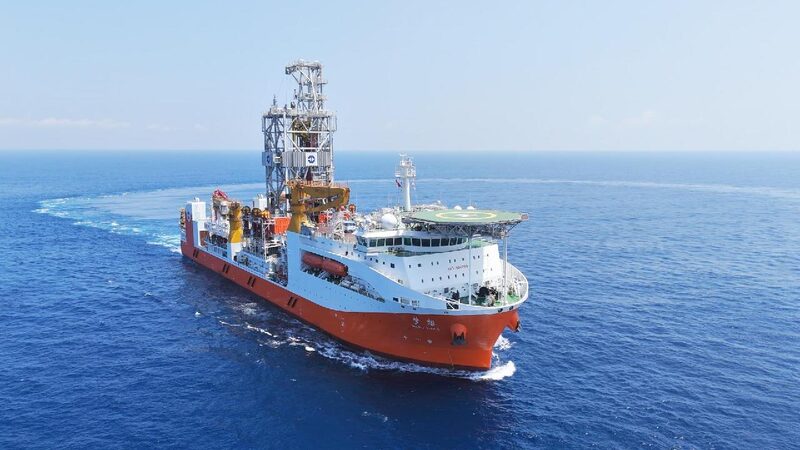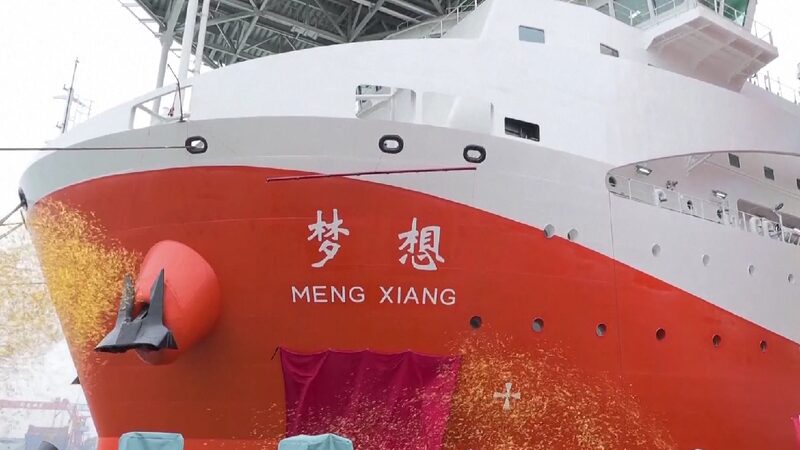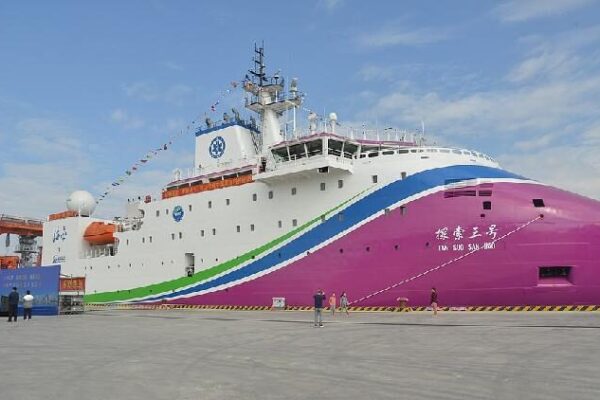China has unveiled its first domestically designed and built deep-ocean drilling vessel, Meng Xiang, marking a significant milestone in marine exploration. The vessel entered service on Sunday in Guangzhou, aiming to delve deeper into the Earth’s mysteries beneath the ocean floor.
Deep-ocean drilling is essential for studying the Earth’s internal composition, uncovering structural formations, and exploring energy resources hidden beneath the seabed. Until now, only the United States and Japan had built their own ocean drilling vessels—the JOIDES Resolution and Chikyu, respectively. With the introduction of Meng Xiang, China joins this exclusive group.
Boasting a gross tonnage of 33,000 tonnes, a length of 179.8 meters, and a beam of 32.8 meters, Meng Xiang is a powerhouse of maritime technology. It can operate continuously for up to 120 days, covering a range of 15,000 nautical miles. Most impressively, it can perform ultra-deepwater drilling at depths of up to 11 kilometers—surpassing the capabilities of its predecessors.
“It can conduct drilling operations anywhere in the world’s major sea areas, and its key role is to solve scientific problems,” said Wang Chengshan, a geologist and member of the Chinese Academy of Sciences. One of the vessel’s ambitious goals is to penetrate the Moho discontinuity, the boundary between the Earth’s crust and mantle.
The Moho is like the shell of an egg; breaking through it allows scientists to study the materials deep within the Earth. Beneath this layer lies the mantle, accounting for four-fifths of the Earth’s volume and three-quarters of its mass—a vast “chemical reservoir” rich with unsolved mysteries.
Sun Zhen, a researcher at the Guangzhou Marine Geological Survey, expressed optimism about the vessel’s potential. “China’s drilling vessel has brought hope to this scientific exploration goal that mankind has been unable to conquer for a long time,” he remarked.
Meng Xiang is more than just a drilling vessel; it’s a mobile national laboratory. Equipped with nine specialized research labs covering geology, paleomagnetism, microbiology, and marine science, the vessel’s laboratory area spans over 3,000 square meters—the largest among current scientific research ships.
“It basically covers the major disciplines in the entire field of ocean sciences, including environmental monitoring of the atmosphere and water bodies, and analytical testing of basic geology, chemistry, and biology,” explained Zhou Yang, leader of the manufacturing supervision group at the Guangzhou Marine Geological Survey.
The vessel features the world’s first hydraulic lifting rig capable of both oil and gas exploration as well as core sampling, supporting a maximum drilling depth of 11 kilometers. Advanced equipment like laser microscopes in the microbial identification room allow for precise analysis of organisms and materials.
With support facilities such as a drilling support ship, deepwater scientific research dock, and the world’s largest ocean drilling core repository now in use, Meng Xiang is set to begin its pioneering missions. It is expected to complete its first ocean drilling within the next two years.
Xu Zhenqiang, director of the Guangzhou Marine Geological Survey, highlighted the vessel’s mission: “It will target major cutting-edge scientific issues such as Moho drilling, the safe, efficient, and green development and utilization of deep-sea energy resources, as well as marine disaster prevention and reduction.”
As Meng Xiang sets sail, it represents a leap forward in humanity’s quest to understand our planet’s inner workings. Teenagers and young adults around the world can look forward to the scientific discoveries that this groundbreaking vessel will uncover.
Reference(s):
China's deep-ocean drilling vessel expected to advance sea exploration
cgtn.com








